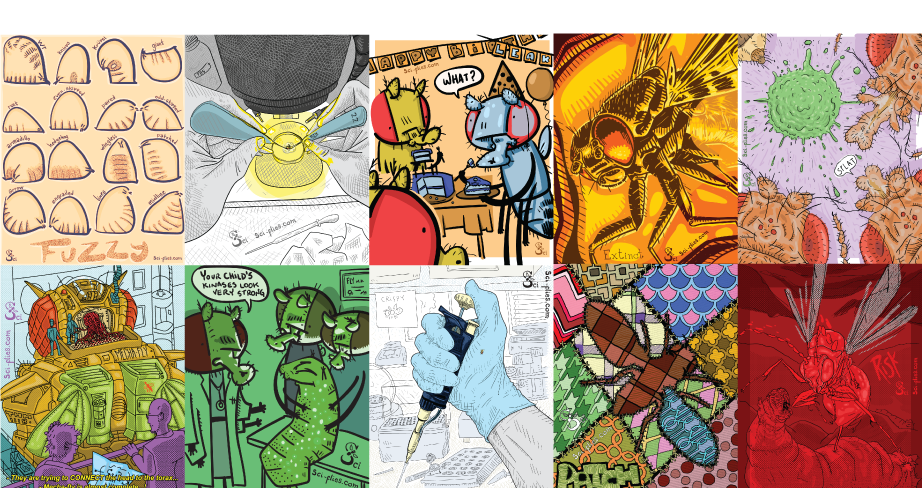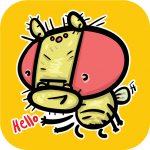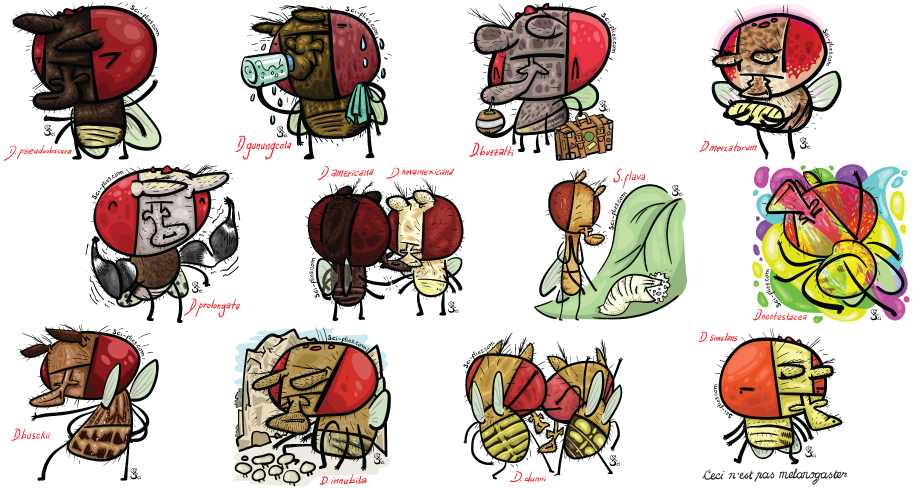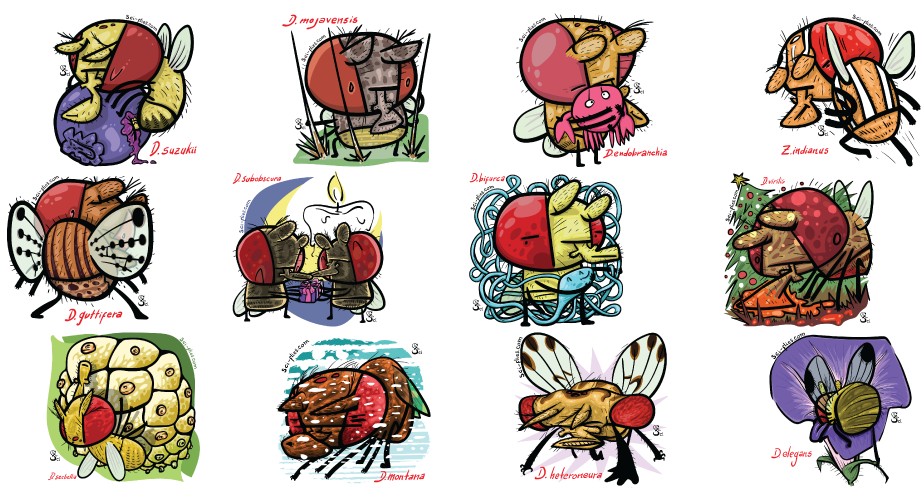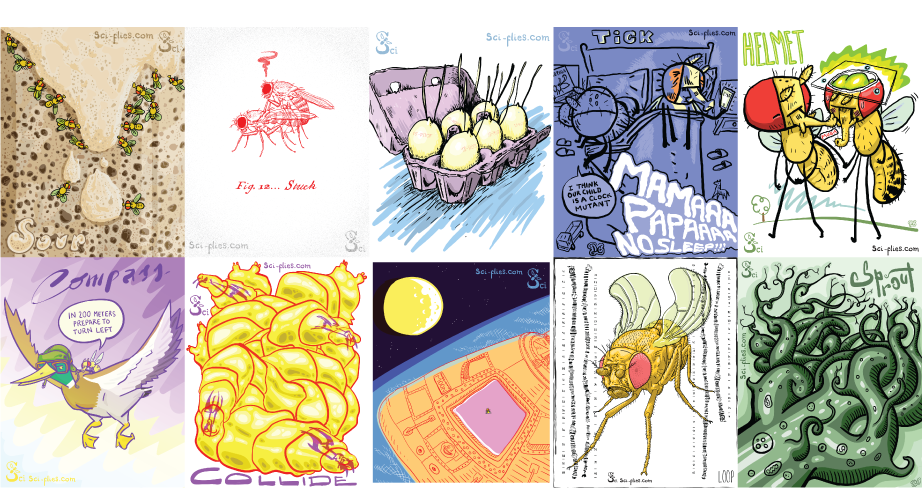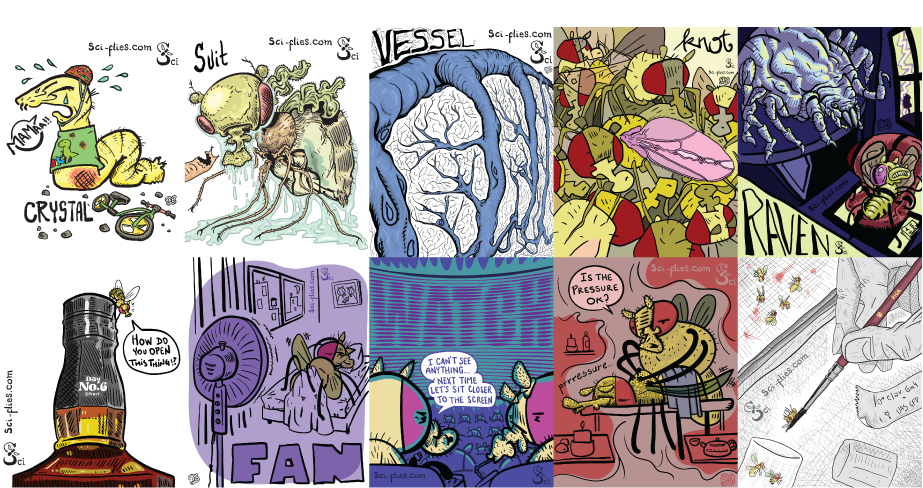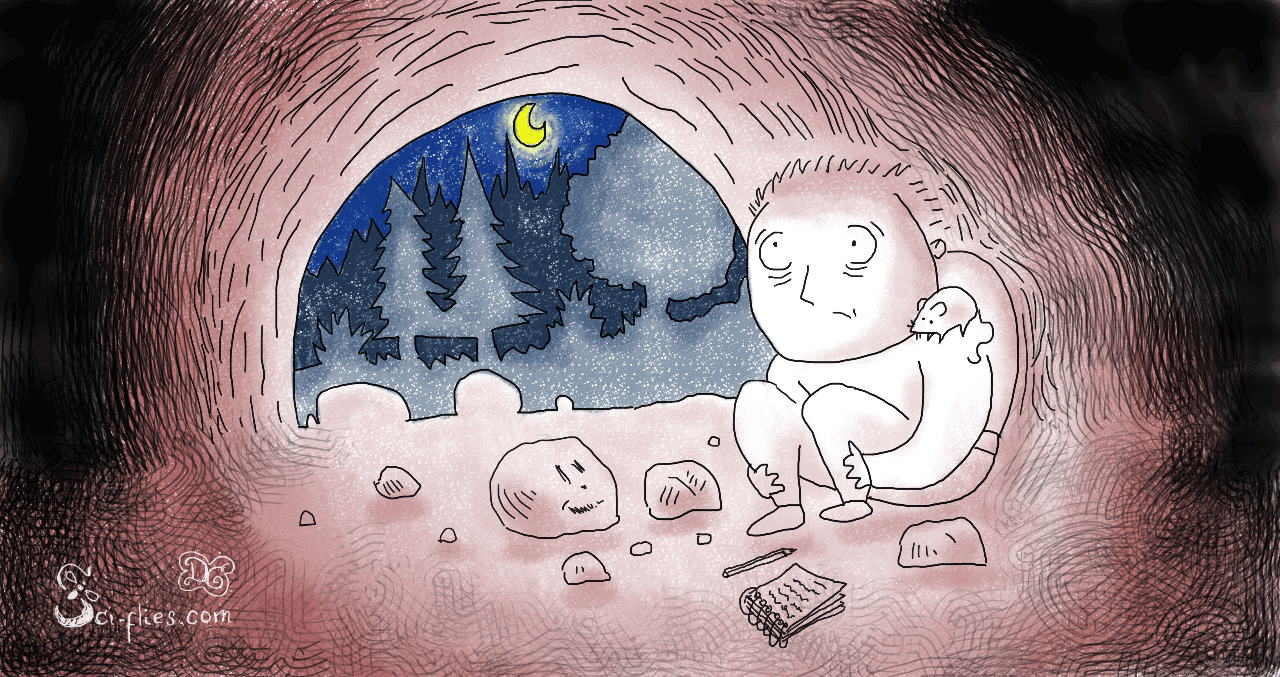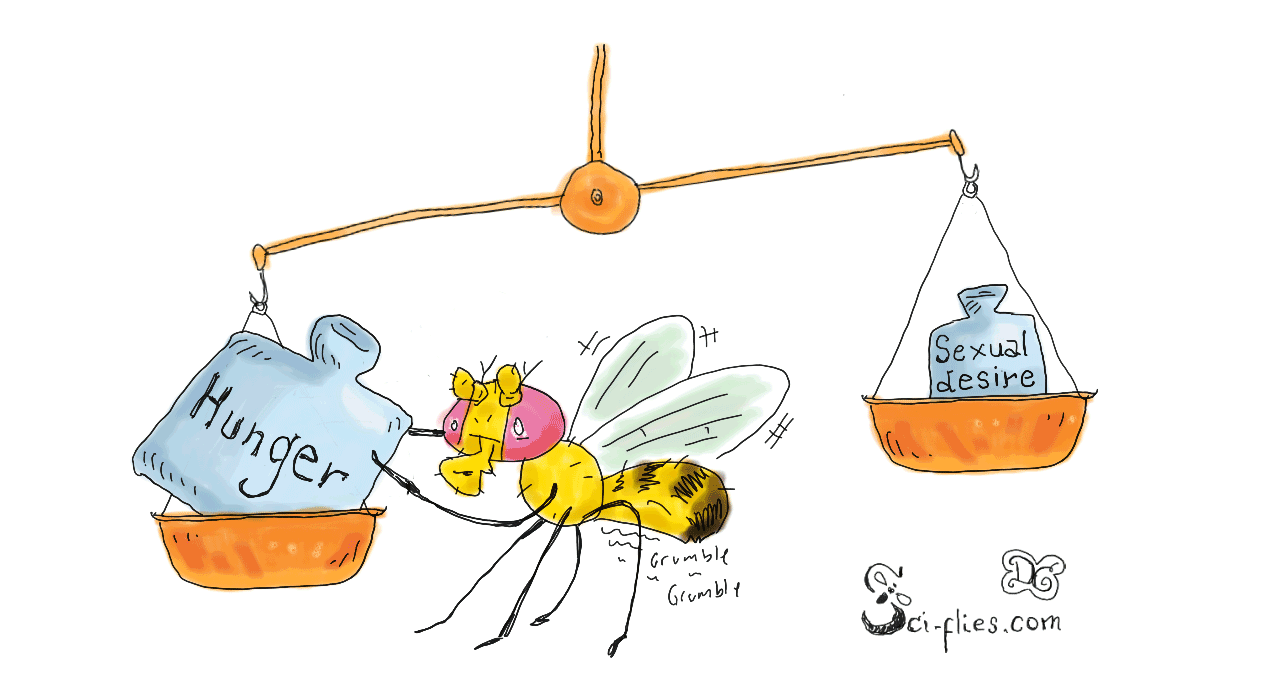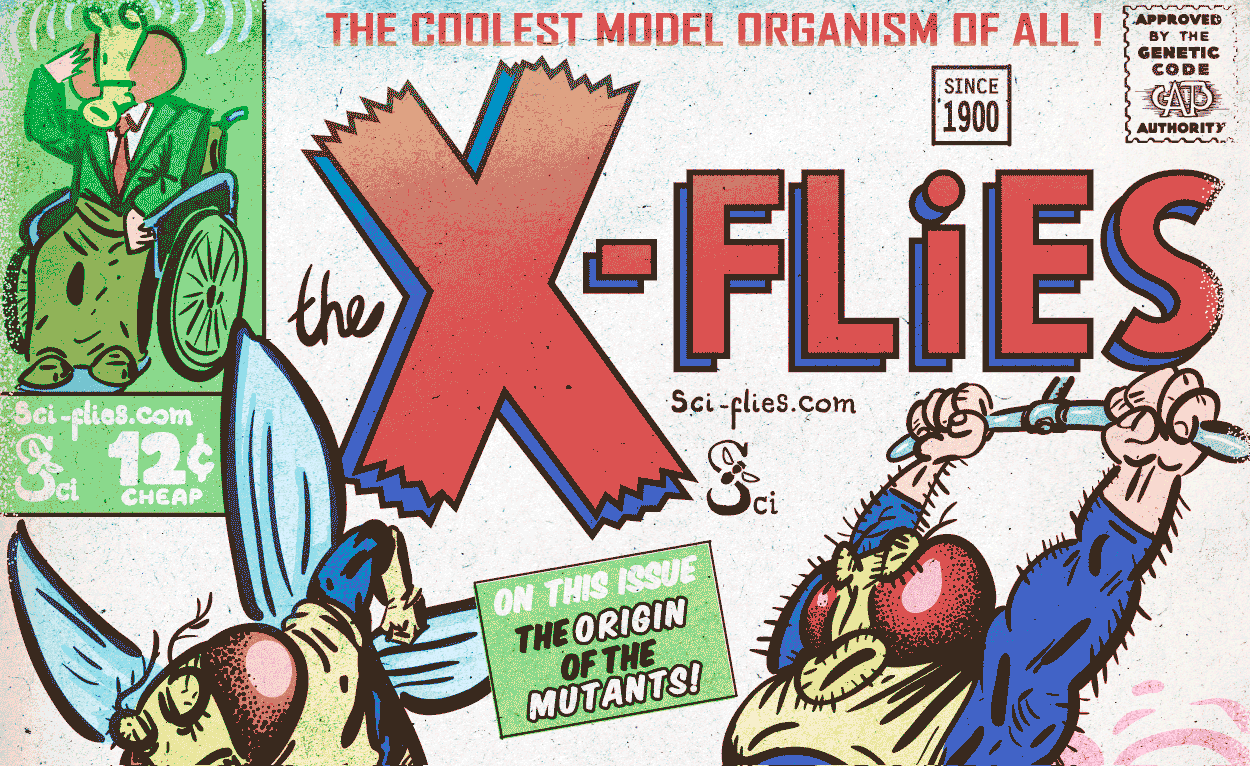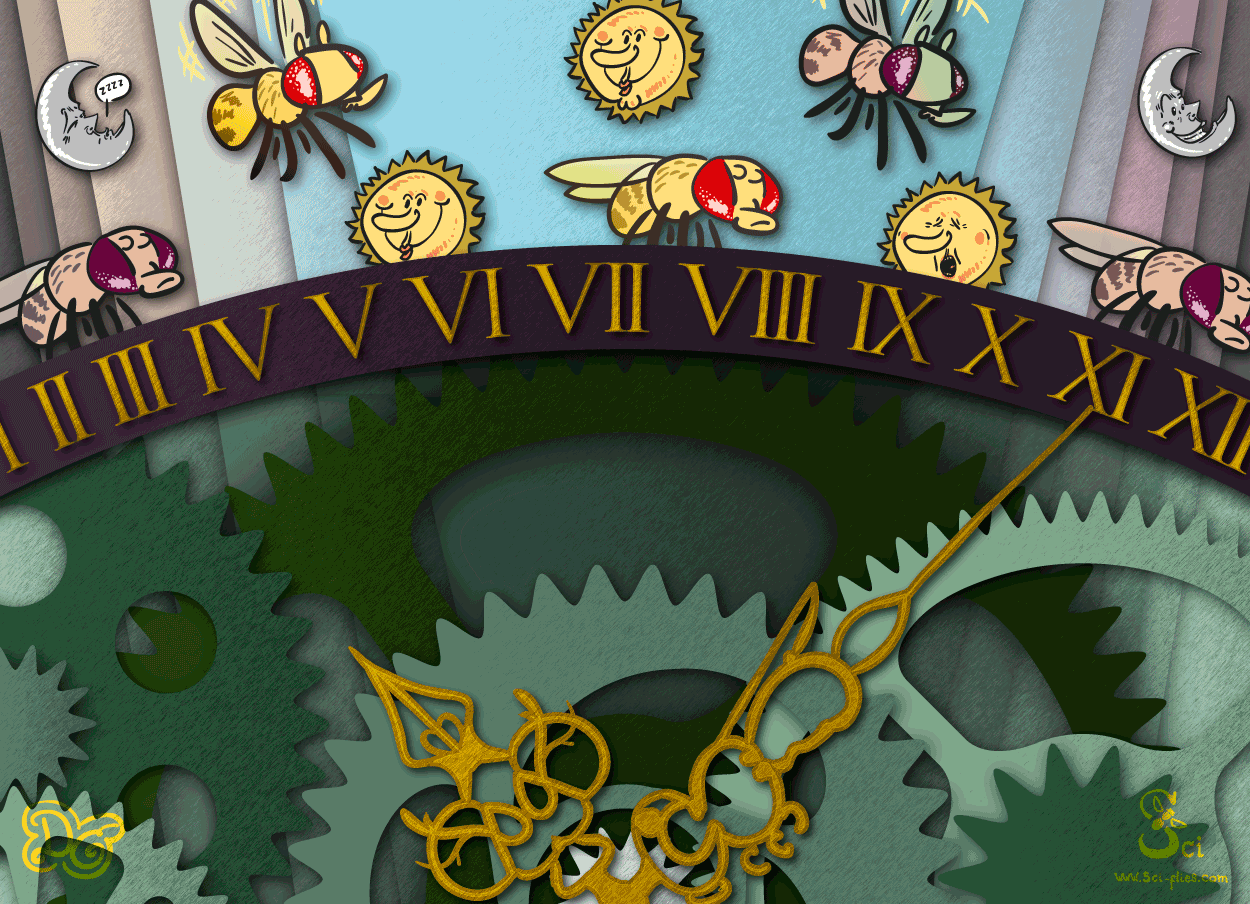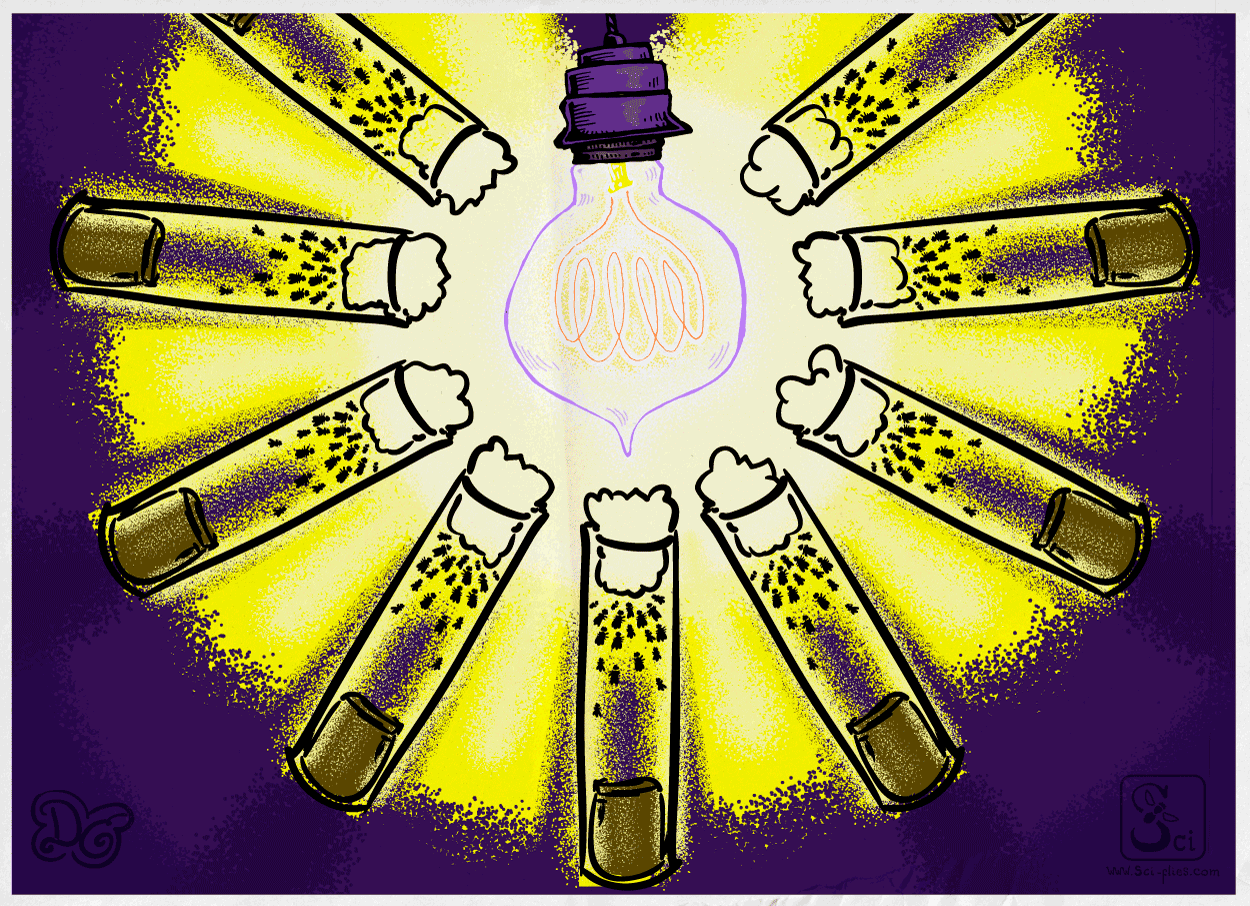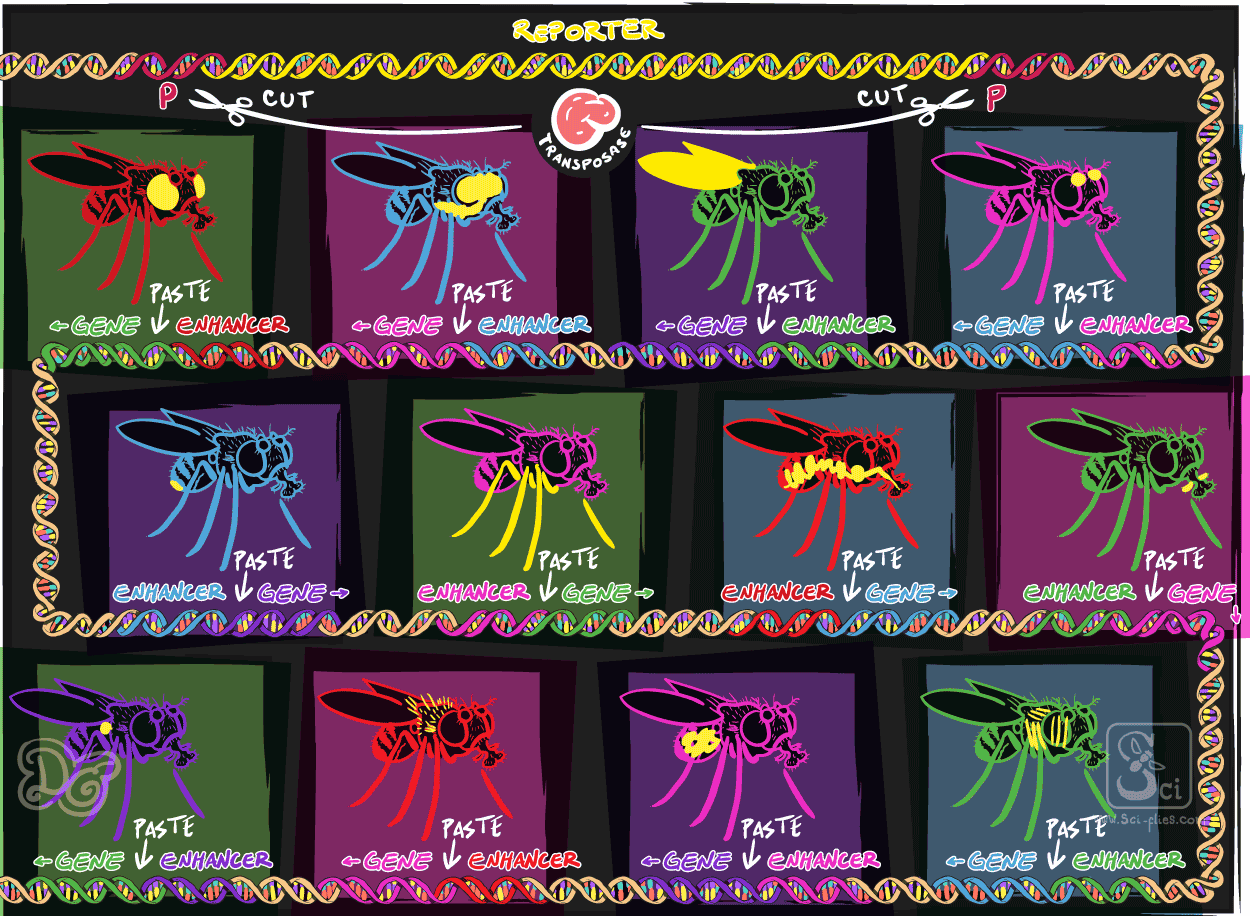And Then There Were Thirty-One DROSOPHILA DRAWINGS
Drawings based on Inktober 2021 prompts - Part III
Inktober is an exercise but also a challenge. The last stretch had me already a little tired, it is not easy to come up with an idea every day, research it, draw it, and color it, in the little free time we have.
However, in the last eleven days, I had already picked up a rhythm and was more comfortable doing it. This, in turn, made me more ambitious, with grander ideas. I did the most complex drawings during these last days. I even made more complex animations, using tools that are not actually designed to do that.
I would recommend this experience to anyone interested in drawing and art. I will certainly do it again, hopefully as a yearly routine.
So here is the 3rd and last part. There will be more, so stick around!
21. Fuzzy
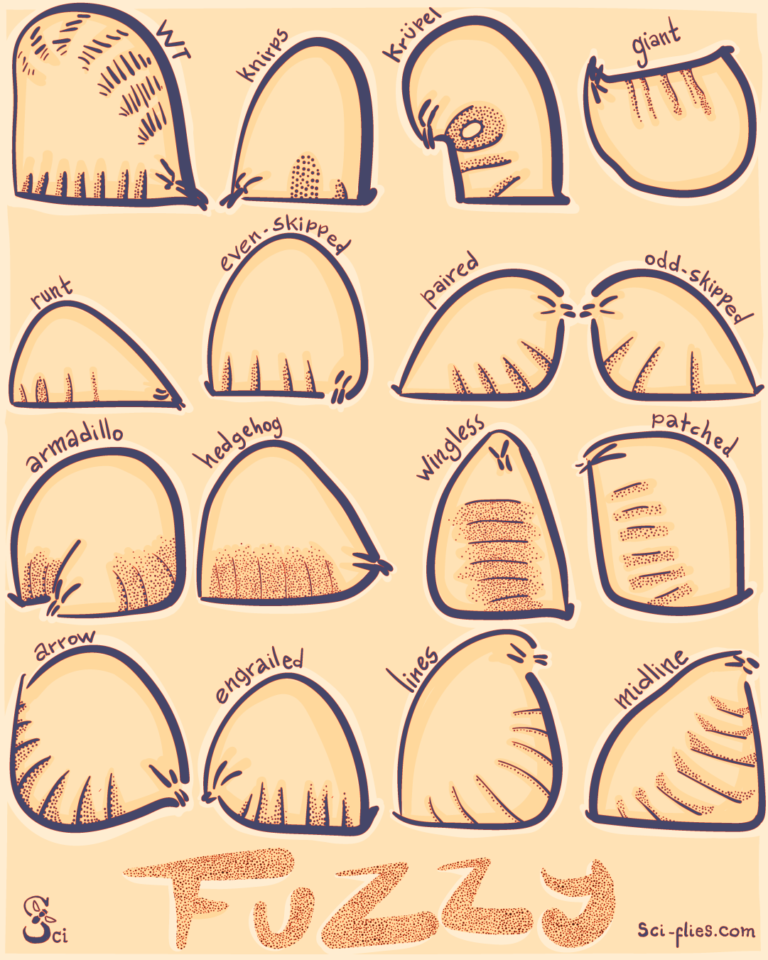
#fuzzy embryo, clear thinking. The body of insects is made up of repeated segments.
During #development, a fertilized egg has to turn into a segmented embryo-larva.
How is the segmentation produced?
To answer this, researchers induced mutations in flies and searched for embryos with missing or misshapen segments.
In the #embryo, segments are easy to see, because they have little teeth on the surface. Many #mutants had fuzzy patterns of teeth from segments that were fused, missing, or incorrectly formed.
The researchers discovered that these segments are produced thanks to certain genes being turned on or off in specific combinations in space and in a specific order in time.
Segments are refined in time. First, genes establish areas in the embryo, then segments, and finally they define the details of each segment.
For me, this is one of the most elegant and impressive works ever done, so I wanted to share it.
I admire the simplicity of the design, the clarity of the chosen experiments, the amount of data generated, and the insight they had in the analysis of the data.
They described the effects of mutations of hundreds of genes, and came up with a mechanism for a fundamental biological process.
This was #inktober2021 day 21. Note: I drew them as cute little larvae, truth is these are all lethal mutations, and none of them survive to hatch from the egg.
One day I will write a full article about this subject, for now here is a great account by the researchers that I highly recommend: E. Wieschaus and C Nusslein-Volhard (2016)
There are three papers from E. Wieschaus, C. Nusslein-Volhard and collaborators (this, this and this) that sums up and shows the phenotypes of many of these mutant embryos in big figures. I always liked the poster appeal of those figures and tried to do something like that with this image. In my case, though, I wanted them cuter and as if they were larvae and not dead embryos. I love these as magnets or stickers, and you can get them at our Redbubble store!
22. OPEN
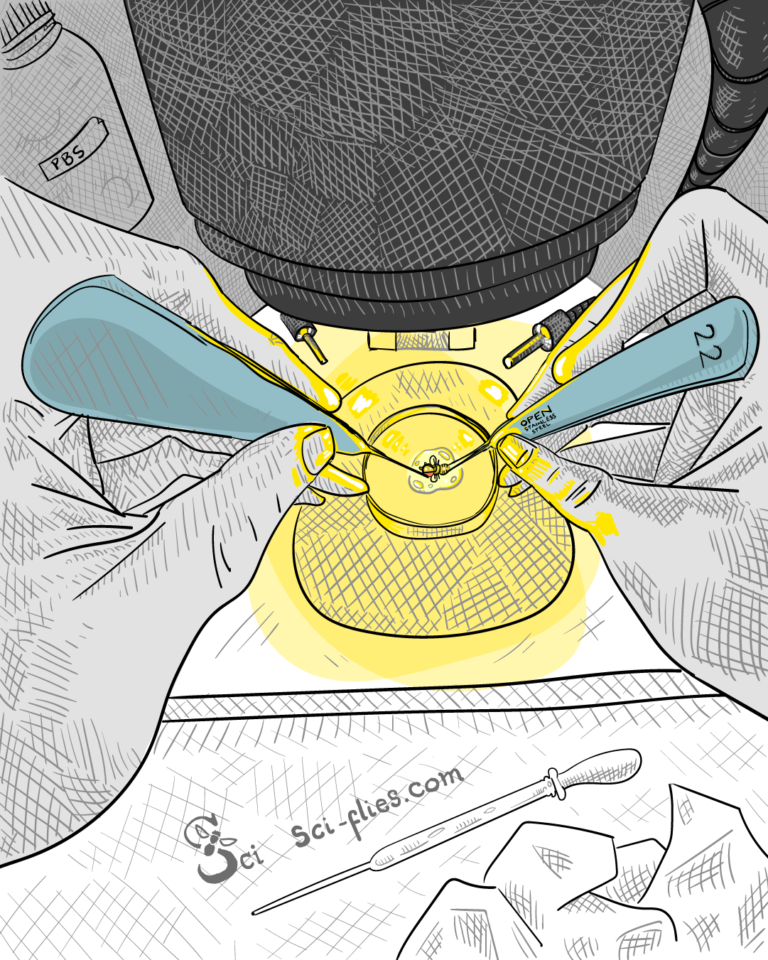
#Open big! A lot of the research done with #fruitflies involves #dissection.
This means opening up the adult fly or the larva to take a look inside.
We use different techniques to give color to the specific structures, and see them through the #microscope 🔬.
Later we can quantify and compare the effects of the treatments we applied on the flies.
This was #Inktober2021 day 22. I had to work fast on the drawing because I started late.
I like force perspectives, but I am still learning, so I used this opportunity to try.
For this one I took a picture of the station I was using at the lab and used it as a model. I had to change the perspective effect for the drawing, because the picture was just a normal picture. I had the idea of making a triptic series with, fly pushing, dissecting, and molecular biology, the three activities I do the most at the lab. Maybe in the future I could add some more, like for example behavioral experiments and microscopy.
23. LEAK
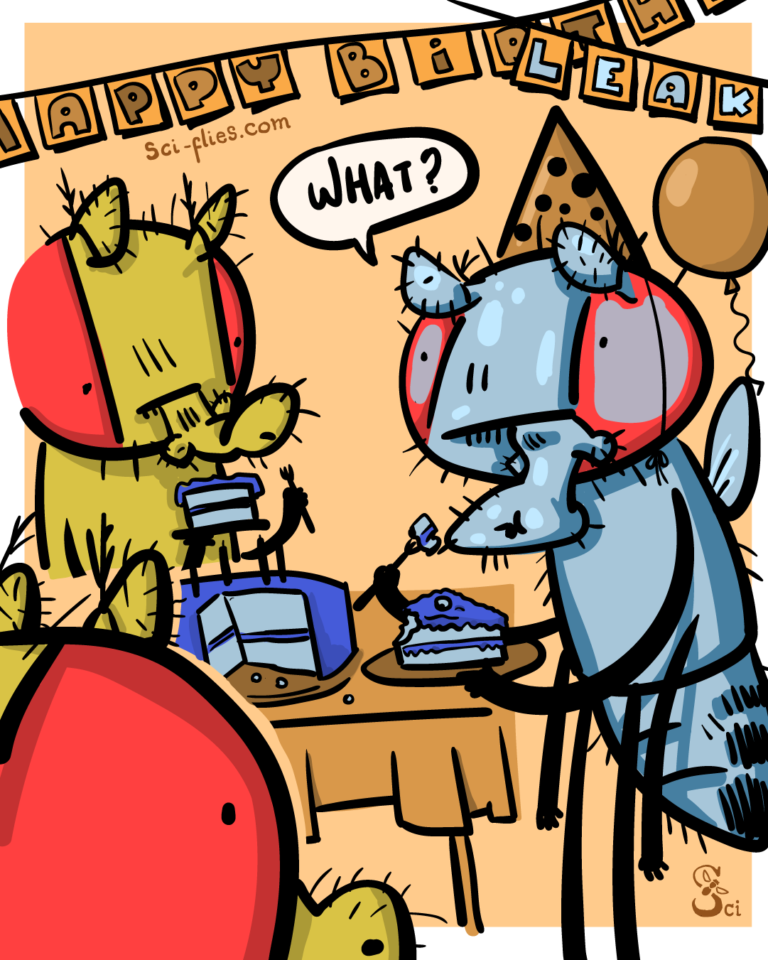
A blue feeling 😨 🎂. We all age. Humans, flies… is inevitable. But, can we delay it? Or at least make it easier to endure? Can we do something!?
Researchers try to understand #aging by studying it in #fruitflies. flies live only 50-60 days, so it is easier.
In one such study, researchers fed flies blue food and saw that, at any age, they could find two groups; Flies that had blue coloring only in the gut, and flies that had turned #smurf, and were blue all over.
They observed that these “smurf” flies had a much higher probability of dying.
The “smurfness” is maybe associated with having a weakened, leaky intestine, a sign of physiological decay.
This was #Inktober2021 day 23, the prompt was #leak. Additionally, this was my #birthday.
Here is an interesting review on aging by the researchers: Rera, et al (2017)
This prompt was perfect to talk about ageing and it was just on the day of my birthday. I later made this drawing into a birthday greeting card available at our Redbubble store. I think it is an interesting opportunity to use it to say happy birthday and also learn something less conventional about science.
24. EXTINCT
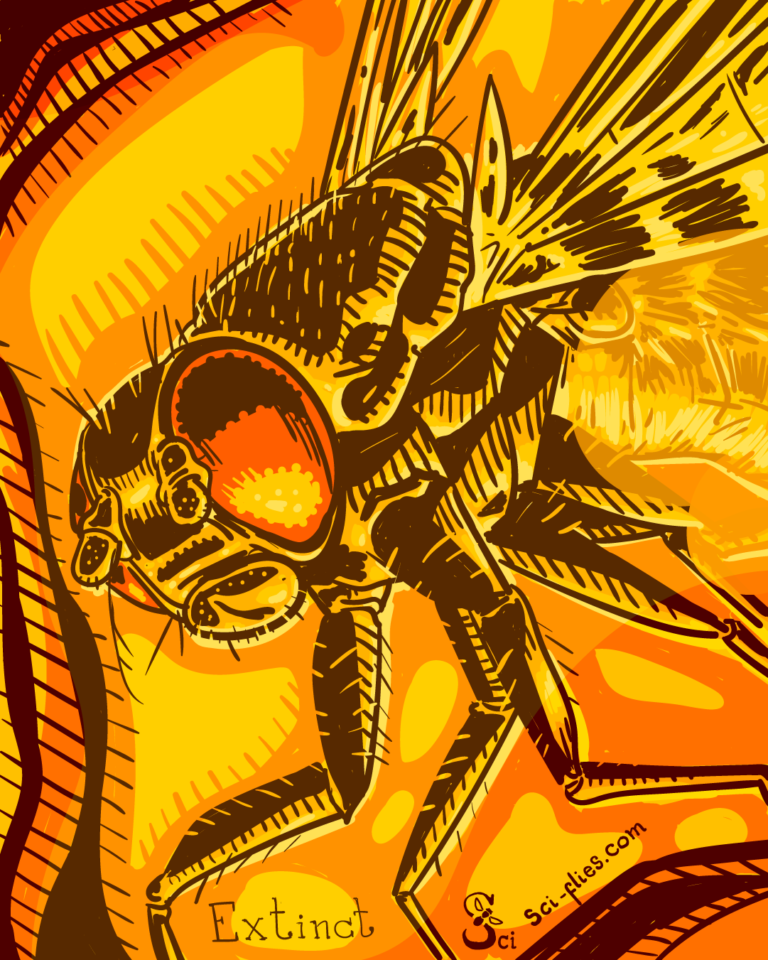
Old, old flies. There are more than 1600 species in the #drosophila family of flies. They live in diverse climates, behave differently, and eat a variety of foods: from tree sap to fungi, from rotten fruit to flower petals (do you want to know some of them? stick around for future posts on that!).
To the untrained eye, they can seem very similar, but they have been evolving and diverging from a common ancestor since more than 50-60 million years ago, much like primates.
In Baltic #amber and in German stones, there are #fossil flies, that give us an incredible glimpse of how these prehistoric flies might have looked.
This was day 24 of #inktober2021. Search online a bit for flies in amber, there are nice pictures. Even the colors of the eyes are preserved in some specimens. Also, there seems to be an extinct fossil species, Drosophila statzi, which I could only find in name.
I really like this drawing. I love the amber-like colors.
25. SPLAT
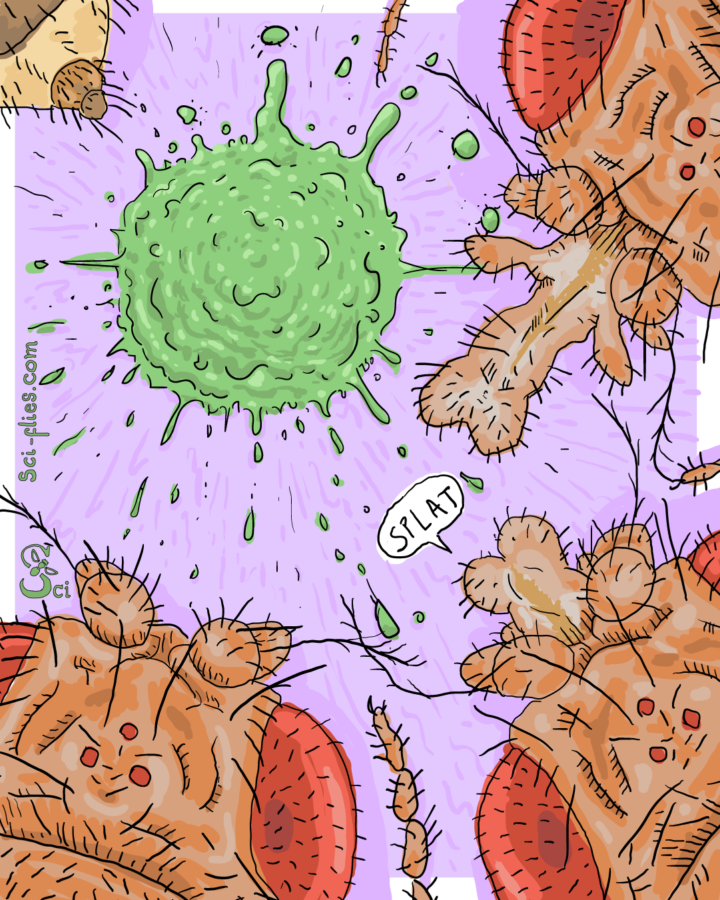
If you #splat it, they will come. Though #fruitflies have their individual lives, they are social #insects and benefit from being together.
So, they gather to eat, mate, and lay eggs. They tell each other about good spots to do all that by leaving chemical signals that tell them to gather around.
They can sense these signals through smell. They release these chemicals in their poop to mark good spots to eat.
Females also release drops that contain unused male sperm to signal good places to lay eggs.
This was #inktober2021 day 25. Read more about the #research here: Keesey, et al (2016) and Dumenil, et al (2016).
Different style on this one. I like how a disgusting subject can turn into a pleasant composition through pastel colors.
26. CONNECT
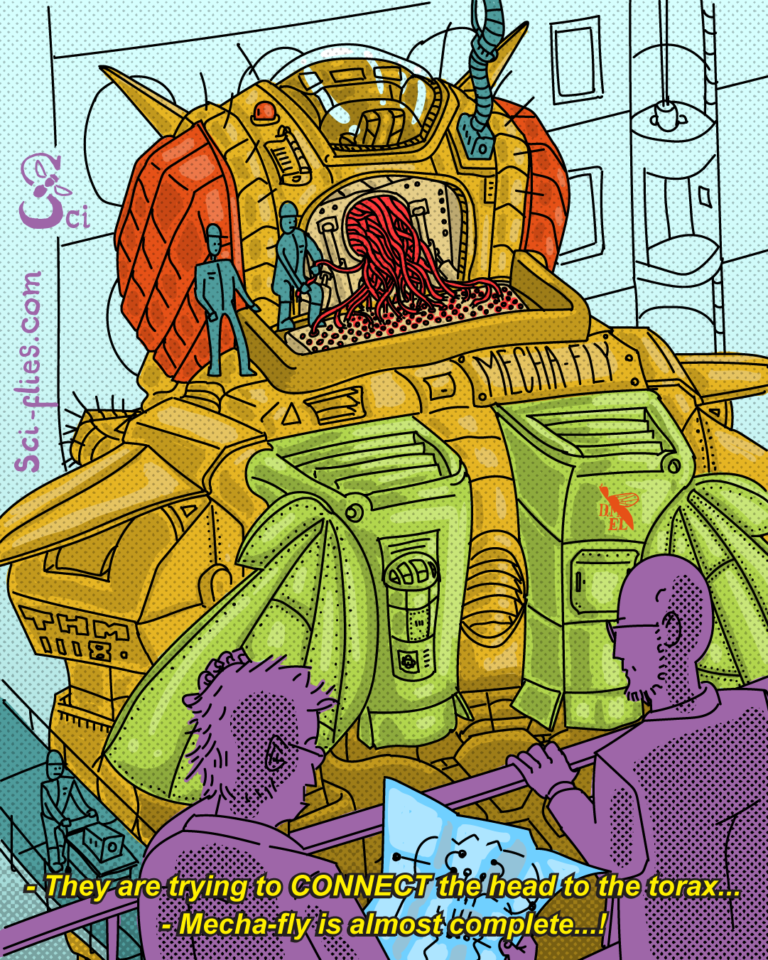
Once we #connect, Mecha-fly is alive! The #brain of the fly receives information from the sensory organs.
In order to ensure that the fly behaves properly, the brain integrates taste, touch, smell, temperature, vision, etc, makes decisions, and sends orders to the rest of the body.
There are more than 500 descending neurons that connect the brain to the ventral nerve cord (the spinal cord of the fly).
In recent years, great efforts have been made to make a blueprint of which neurons connect which parts of the brain to which parts of the body.
This includes making #transgenic flies that will allow to control each of them independently and study them experimentally.
This was day 26 of #inktober2021. It took me longer, but I had a lot of fun with this one. Here are a couple of papers on the descending neurons and the website of the people at Janelia Farms making the transgenic lines. Cande, et al (2018). Namiki, et al (2018).
This is a reference to the Neon Genesis Evangelion anime. I took inspiration of a frame of the cartoon and changed the robot and added characters. You can spot some Easter-eggs in the drawing, like the name of the robot, THM for Thomas Hunt Morgan and w1118, for one of the most widely used D. melanogaster mutants for transgenesis. I also added the NERV logo from the cartoon but with the word DMEL on it and a fly silhouette instead of the half vine leaf.
27. SPARK
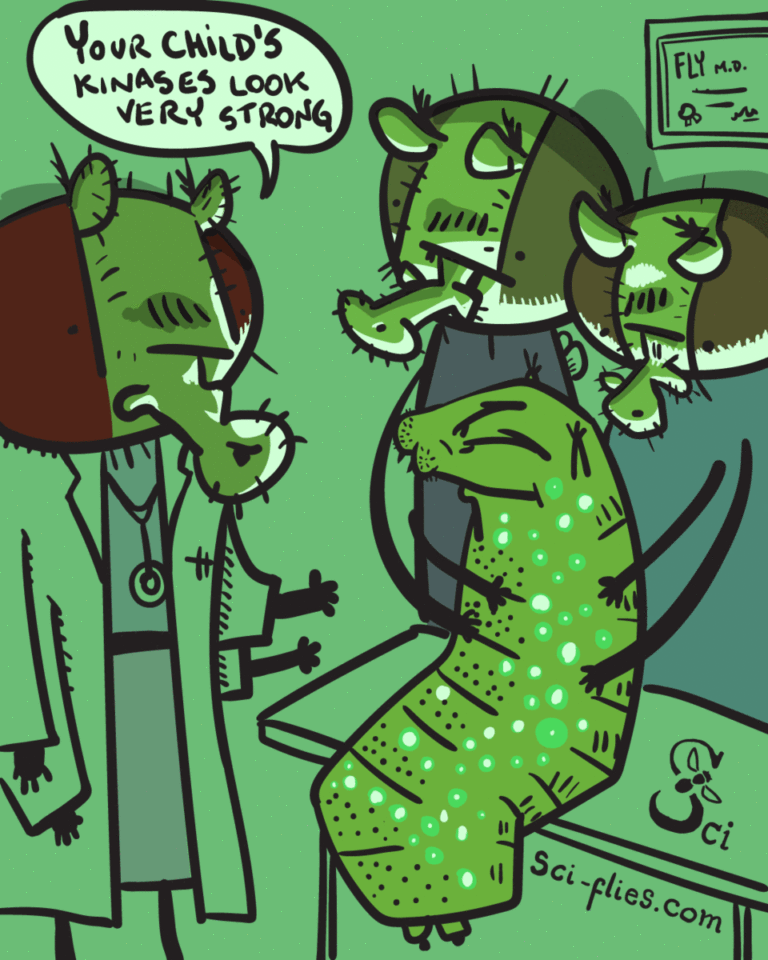
A #spark in the dark. How do we see what happens inside of the #cell?
When a cell receives a signal from outside, it may trigger a chain of reactions specific to that signal.
Depending on the signal, this will turn on, off, or change processes within the cell.
Scientists can visualize these responses by introducing “reporters” in the cells, which are artificial molecular constructs that light up in response to a specific signal.
A reporter called SPARK helps visualize the activity of enzymes called “kinases” in larvae and even in live Drosophila pupa!
This was #inktober2021 day 27. Here is the paper where they develop SPARK and show how a specific kinase activates in the trachea of the Drosophila pupa.
Zhang, et al. (2018)
The second animation I tried. This time instead of just moving elements, I drew the shadows and lights bigger and smaller in just three frames, to make this flashing light effect, like when cartoons watch TV.
28. CRISPY
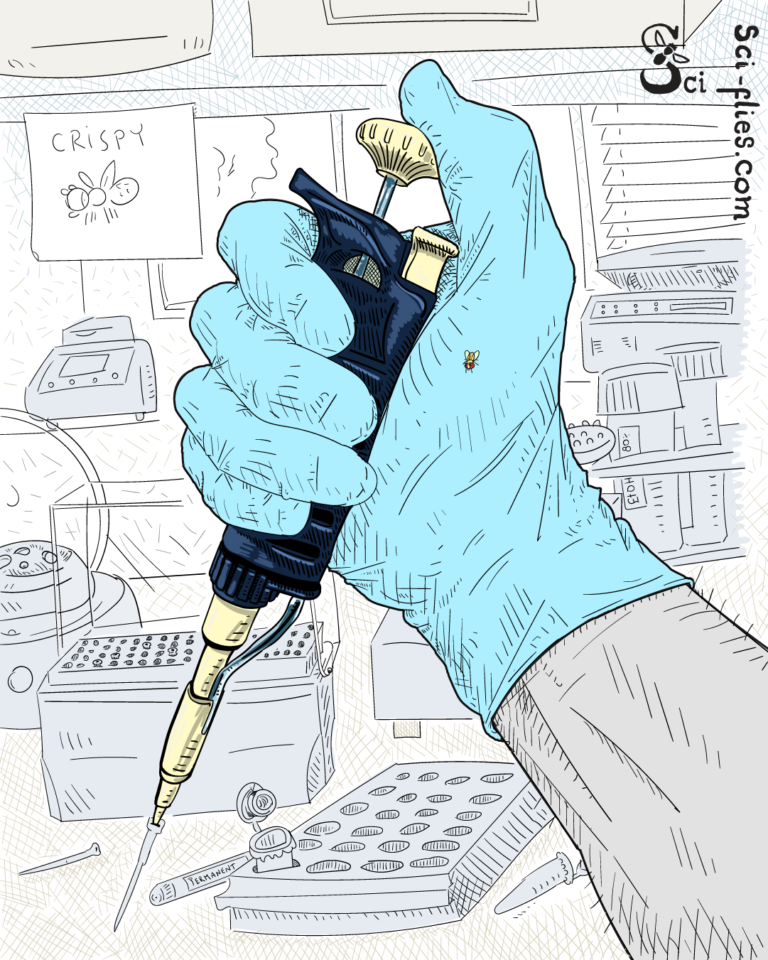
#crispy flies. The latest technique to modify the #genome of flies is called #CRISPR.
It allows to target exact sites in the genome and insert custom-made modifications.
Making #mutants now involves the #molecularlab, where researchers and technicians mix and match the genetic constructs that will be introduced in the flies’ genome.
Also, where #DNA will later be prepared to sequence and verify those modifications.
We’ve come a long way in a century of mutating flies. From the first spontaneous mutant identified, through the generation of random mutations by radiation or chemicals,
to introducing transgenes and making DNA elements jump around, to finally making targeted, precise, cost-effective, genome edits.
It was day 28 of #inktober2021. I was behind by 2 days, so October would be longer. Follow the link to read more about CRISPR.
I took a picture of my hand holding the pipette. Then I traced the outline and drew on top of it. In the picture I was not wearing a glove, so I drew how it would look like. The background is a composite of what my bench and lab space looks like, I drew it from memory but made it less messy 😄.
29. PATCH
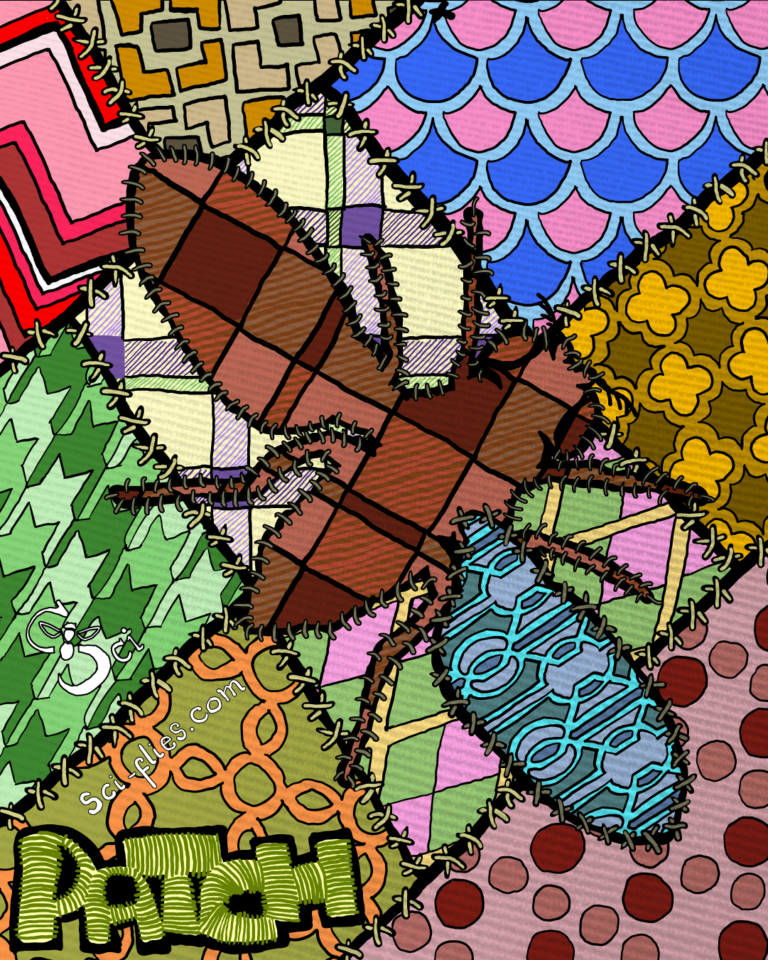
A special #patch. When there is a #mutation within a #cell, are other neighbour cells also affected?
To answer this, researchers use “mosaic” flies. These are patchy animals that carry mutations or genetic modifications only in some cells of their body.
Researchers can then study those animals and compare the #mutant cells to surrounding regular cells, and determine if a #gene acts only in the cell where it is.
In these mosaic flies, we can distinguish the mutant cells from regular cells through some markers, for example, the expression of a fluorescence protein.
The analysis of mosaics can also be used to study the fate of embryonic cells and the lineages of cells through #development.
Traditionally making mosaics involved complex genetic crosses. Current techniques use #transgenic flies and are more accessible.
This one was a lot of work. I searched for fabric patterns. Turns out each of these have a name. Fascinating to learn about that. There’s Argile, Scales, Houndstooth, Quatrefoil, Plaid, Lattice, Trellis, and more. I drew all of them by hand and made the patchwork. Then I used a picture of a place-mat we have at home for the texture. At the Redbubble store there is a cup that has another version of this drawing with flies of different colors.
30. SLITHER
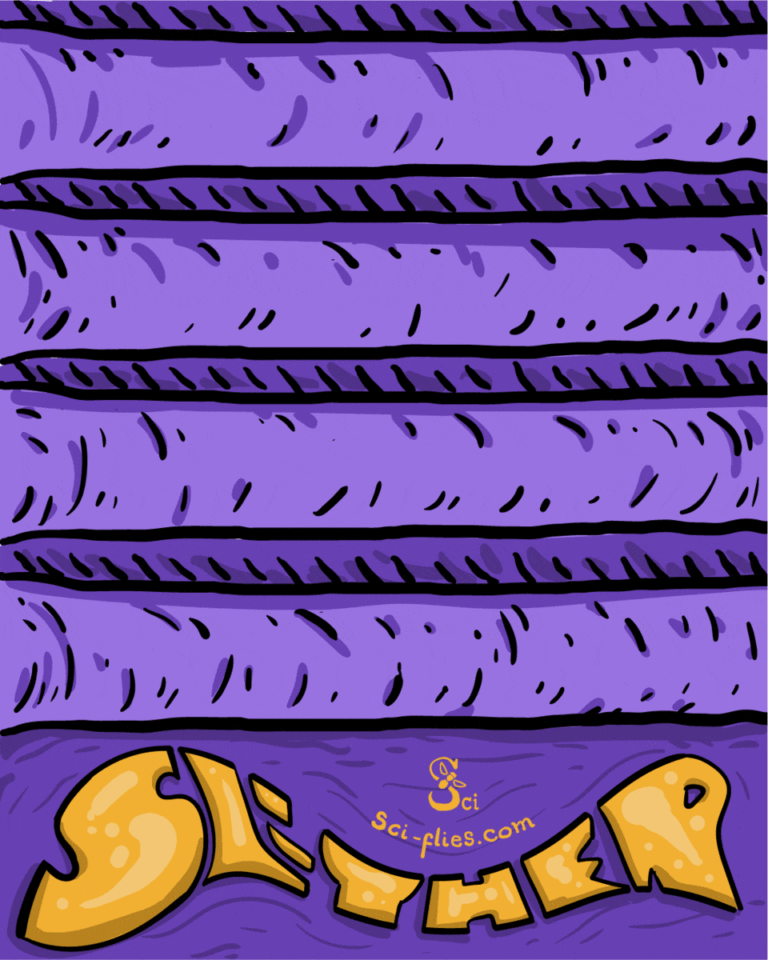
#Fruitfly larvae don’t #slither, they crawl. But hey, I had to draw something! And this also allows us to talk about how larvae move in a straight line. First the #larva extends the “head” segments and digs the teeth in the substrate. Then, their muscles generate a wave of contractions that starts from the back segments and moves forward. Then they repeat, and repeat.
#inktober is over, but I am still finishing up. I have one more to go! I am learning the animation thing. It is not perfect, but it is one step forward on a slow crawl. You can read more about the description of larval movement in Heckscher, et al (2012)
The paper in which they describe the locomotion of the larva has a figure in which they draw the steps of the movement. This was perfect to turn into an animation. I drew the 5 frames necessary for the movement and the background. The longest process was figuring out how to make them go across the drawing using my limited tools. I ended up with a grid of 125 drawings that I turned into this gif.
31. RISK
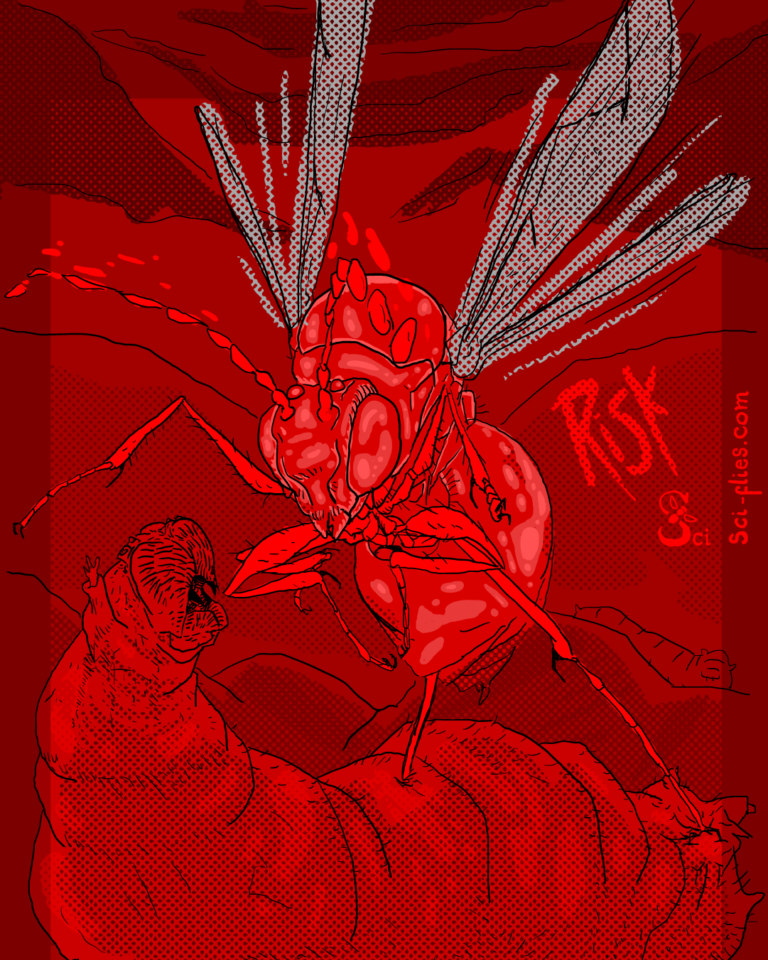
The #risk of being a larva. Parasitoid #wasps attack and lay eggs inside of fruitfly larvae.
Larvae can only defend themselves by twisting and turning.
When adult female flies see wasps around, they change their #behavior and #physiology, and stop laying eggs.
They can teach and transmit these changes to flies that have not seen any wasps yet.
Adult flies also accelerate their courtship behavior and copulate faster when they see wasps around.
The relationship between wasps and flies is used to study #immune response, #neurobiology of behavior, reproductive physiology, neuronal muscle control, and many more biological processes.
It is also studied as a #pest control alternative.
This is the last #inktober2021 #inktober #digitaldrawing. #Experimentation with colors and design to the last!
I hope you enjoyed this journey and I wish it piqued your interest in #biology and #drosophila.
We will continue producing content, so stick around, visit our website, comment, share, like, follow, buy merch, download the app, learn about science!
Here are some papers on wasps and flies. Kacsoh, et al (2015), Ebrahim, et al (2021), Dason, et al (2020)
I found the colors for this one by chance and really love them, it is very violent and striking. I like how I did not drew a face on the larva, but the denticles and the features of the head makes it look like a walrus.
That was it, Part 3 and the end of Inktober. I hope it was entertaining, interesting and informative. Stay tuned for more from Flying Thru Science!
